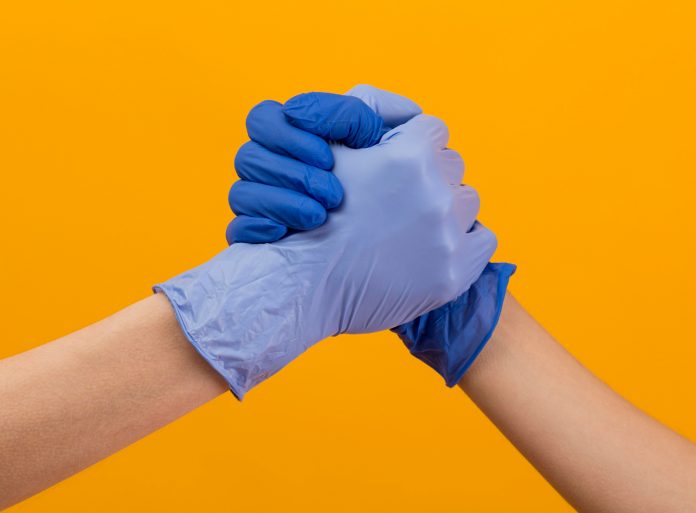In the ever-evolving landscape of healthcare, where precision and hygiene reign supreme, the importance of choosing the right gloves cannot be overstated. Whether in a bustling hospital, a private clinic, or the quiet confines of a caregiver’s home, the right pair of gloves serves as a frontline defense against infection and an essential tool for patient care. In this comprehensive guide, we’ll review the different types of gloves used in health services and what to consider when choosing the best option for the task.
Types of Disposable Gloves
In the realm of health services, the choice of disposable gloves plays a pivotal role in ensuring safety, precision, and hygiene. Healthcare professionals encounter a diverse array of tasks, each demanding specific attributes from their protective gear. When it comes to medical tasks, there are three primary materials to choose from: nitrile, latex, and vinyl gloves. Each type brings its unique set of characteristics, making them suitable for distinct applications in the healthcare setting. From the resilient and hypoallergenic nature of nitrile to the tried-and-true elasticity of latex and the cost-effective versatility of vinyl, understanding the nuances of these glove materials is paramount for healthcare professionals seeking optimal protection and performance in their daily tasks.
Nitrile Exam Gloves
Nitrile gloves have long been the #1 choice in health services, and for good reason. One of the standout advantages of nitrile gloves is their durability and resistance to punctures, making them a reliable barrier against potentially harmful substances. Health professionals who require gloves with a high degree of tactile sensitivity appreciate nitrile’s snug fit, allowing for precise and nimble movements during intricate medical procedures. Furthermore, nitrile gloves are the go-to for individuals with latex allergies, addressing a significant concern in healthcare settings. However, as with any product, there are considerations to bear in mind. While nitrile gloves boast impressive chemical resistance, they may not be as comfortable as latex alternatives, potentially leading to hand fatigue during prolonged use. Nonetheless, the overall benefits of nitrile gloves make them a formidable choice in health services, striking a balance between protection, sensitivity, and allergen considerations.
Latex Exam Gloves
Latex gloves have long been a staple in health services due to their natural elasticity, providing a snug and comfortable fit that enhances tactile sensitivity. Health professionals appreciate the exceptional dexterity afforded by latex exam gloves, making them ideal for intricate medical procedures where precision is paramount. The flexibility of latex allows for easy donning and removal, contributing to efficiency in fast-paced healthcare environments. Moreover, latex is a cost-effective option compared to some alternatives, contributing to its widespread use. However, it’s crucial to acknowledge the downside – latex allergies pose a significant concern. As a result, healthcare facilities are increasingly mindful of offering latex-free alternatives to accommodate the diverse needs of both patients and practitioners. Balancing the advantages of latex gloves with the potential risks is essential, making informed choices vital in maintaining a safe and comfortable healthcare environment. If your facility opts for latex gloves, we highly recommend having a second option like nitrile or vinyl available in the event you have a patient with latex sensitivities.
Vinyl Exam Gloves
Vinyl exam gloves have found their niche in health services, offering a budget-friendly option that can hold up to a variety of healthcare tasks. The biggest benefit of vinyl gloves is that they are cost-effective, which makes them an attractive choice for healthcare facilities mindful of budget constraints. Vinyl gloves are also latex-free, so they can be used with patients who have latex allergies. Vinyl gloves typically provide a looser fit, contributing to user comfort during extended wear, and are often chosen for non-invasive medical procedures where tactile sensitivity is less critical. However, it’s important to note that vinyl gloves don’t have the same durability and puncture resistance as nitrile or latex counterparts, which makes them better suited for low-risk tasks since they are more likely to tear than stretch.
Sterile Surgical Gloves
Sterile surgical gloves are a critical tool in healthcare settings, where precision and asepsis are paramount. The primary advantage of these gloves lies in their meticulous manufacturing process, ensuring a sterile environment during surgeries and other invasive medical procedures. Crafted from high-quality materials like latex, nitrile, or a combination of both, sterile surgical gloves provide an exceptional barrier against contaminants. Sterile gloves must be used for surgeries and high-risk procedures. Please note that all of our gloves here at GloveNation are non-sterile, so we do not sell any gloves that are safe for use during surgery.
How to Choose the Right Exam Glove
As we explore the nuances of nitrile, latex, and vinyl gloves, it’s crucial to remember that the foundation of glove selection in health services lies in their exam-grade classification, safeguarding the integrity of healthcare practices. Exam-grade gloves undergo rigorous testing to ensure they meet stringent requirements for barrier protection, durability, and resistance to contaminants. The table provided below is a guide to assist in discerning the suitability of different glove types for various health services tasks.
Health Services Tasks and Glove Suitability
- Nitrile Gloves: Ideal for high-risk situations involving exposure to bloodborne pathogens or harsh chemicals, offering durability and allergy-free protection.
- Latex Gloves: Best for tasks requiring high tactile sensitivity and flexibility, though not suitable for individuals with latex allergies.
- Vinyl Gloves: Suitable for low-risk, non-invasive procedures, providing a cost-effective and latex-free option.
Choosing the right gloves for health services ensures not only the safety and comfort of healthcare professionals but also the well-being of the patients they serve. With the right information, selecting the best glove for any medical task becomes a straightforward decision.












